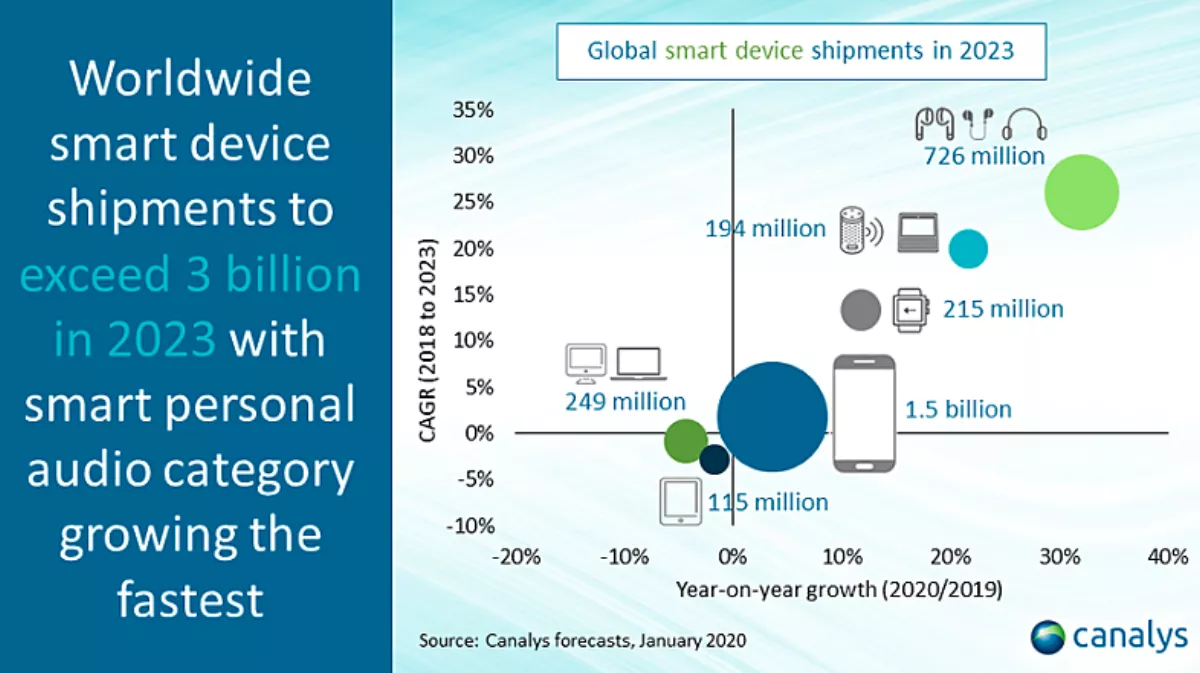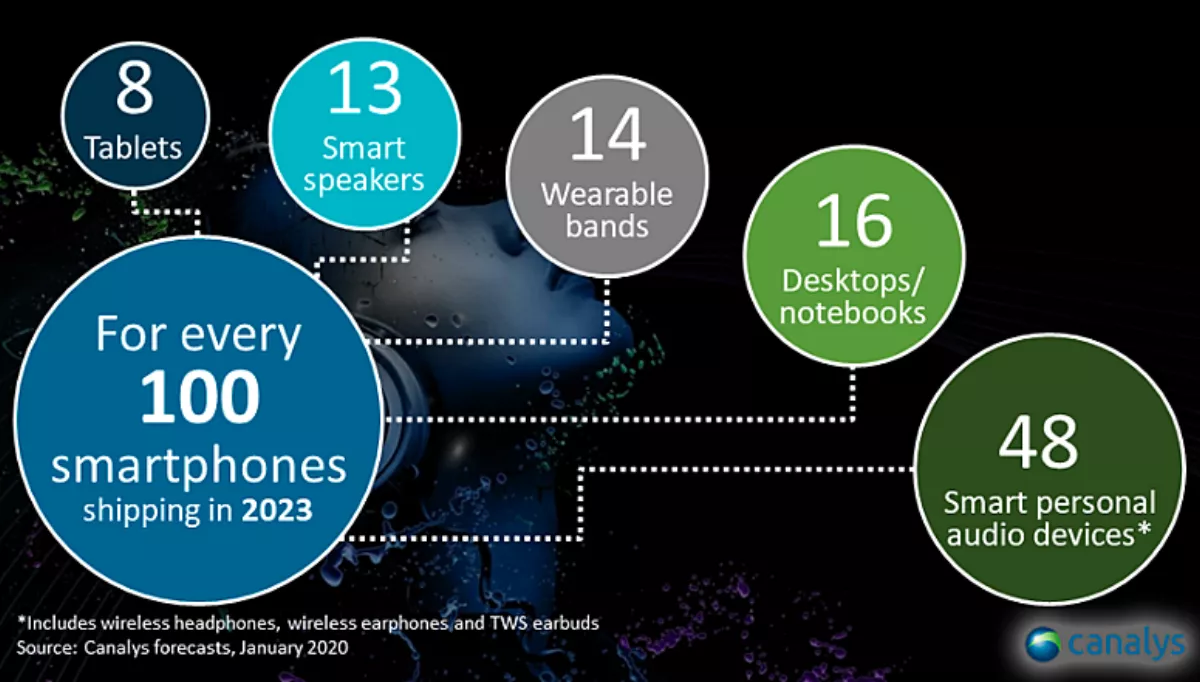
Canalys: Smart devices to reach three billion by 2023
Smart device shipments are expected to reach three billion worldwide in 2023, according to new forecasts from Canalys.
Smart devices include smartphones, desktop PCs, notebooks, tablets, wearable bands, smart speakers and smart personal audio devices. The analyst firm says the growth represents a four-year CAGR of 6.5% from 2.4 billion units in 2019, despite economic and political uncertainty.
In the smartphone market, vendors expect challenging conditions despite the introduction of 5G and new form factors, and will double-down on their ecosystem strategies in 2020 to challenge the incumbents in many device segments. Smartphones will remain the most important category, and will account for more than half of all smart device shipments.
In terms of opportunities, smart personal audio will be the fastest-growing category, up 32.1% year on year in 2020 to reach 490 million units, as Bluetooth headphones, earphones and TWS earbuds all grow. The second fastest-growing category will be smart speakers, up 21.7% to 150 million units in 2020, followed by wearable bands, which will grow 11.8% in 2020.

"The ambient computing paradigm is taking shape and getting ready for mass-market roll-out in the next five years," says Jason Low, senior analyst at Canalys.
"Smart devices, especially relatively new categories, such as smart personal audio devices, wearable bands and smart speakers, are forming multiple touchpoints to complete an intelligent ecosystem for consumers on the move, at work and at home," he says.
"A lot of progress has been made in the past 12 months, and it will be the most important trend in consumer technology in 2020. It is becoming apparent to vendors that these devices are important as they offer different opportunities for user interactions and a more holistic approach to the user experience, as well as several key features that cannot be effectively achieved by smartphones alone.

Canalys VP of mobility Nicole Peng asys there is no 'one size fits all' for ambient computing.
"Each vendor must take their own goals, capabilities and target audiences into account while they pick the right strategy. But there are many big bets to be made, especially for vendors new to this game," she says.
"Apple has showcased its capabilities to form a tight-knit ecosystem of devices and user experiences. But others are choosing a more open strategy. Smartphone companies are challengers in consumer IoT but can weaponize their prominent position in the everyday digital user journey to expand beyond their core business," explains Peng.
"To reach more users, often including iOS users, they must think outside the box to provide seamless integration between smartphones and smart devices, both from a connectivity and a software standpoint.
"By contrast, platform vendors, such as Amazon and Google, are far ahead in terms of ecosystem-driven features and services," she says.
"It is not just that their services are platform- and device-agnostic, they also have much more capable smart assistants. To compete, hardware vendors must consider how different ecosystem devices should be positioned to align with their respective strategies, while creating new business models to complement the overall ecosystem.


